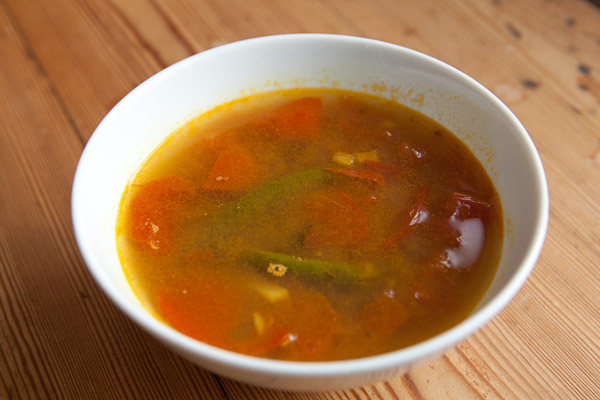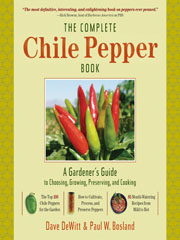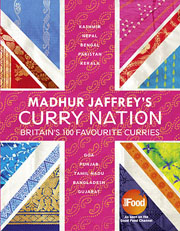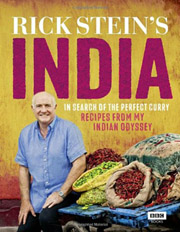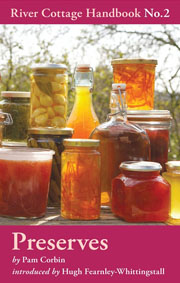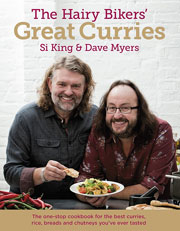Being married to an Indian, I like to think i’ve learnt a thing or two about authentic Indian cuisine over the last few years. When I see that yet another celebrity chef has written a book on Indian cuisine I always fear the worst. All to often the result is not so authentic recipes. However in this book I’m pleased to say that Rick Stein seems to have got it bang on and delivered a great recipe book.
The book is a follow on from the recent TV series of the same name. It was clear watching the series that Rick Stein was really captivated by his time in India, both with the culture and people as well as the food. Its nice to see such a talented chef so openly engaged in learning more about a foreign food culture.
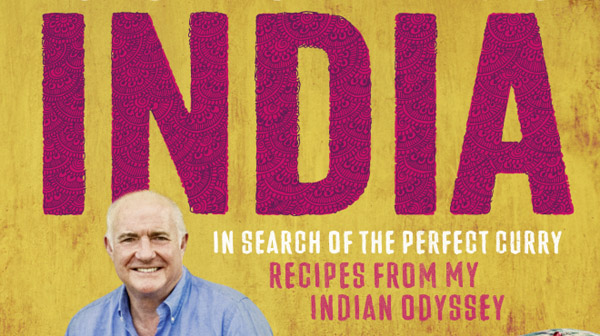
What I like most about this recipe is that the author doesn’t dumb down any of the recipes or ingredients for his British audience. While the usual suspects such as Butter Chicken, Sag Paneer and Korma are present and correct there are also the real classics of Indian cuisine that are often undiscovered by the British like Thoran (dry cabbage dish), Rasam (tamarind and tomato soup), Rajma (kidney bean curry) and Dal Maa ki (black lentils).
In the actual recipes Rick has stuck to the small details that make the differences in the dishes. Whether it is the small addition of daal in the rasam or specifying different types of oil (mustard, coconut etc) for certain dished it is these small details that I believe make the recipes truly authentic.
While filming the TV series Rick was based in Kerela and as you’d expect for such an accomplished fish chef there is a healthy section on Indian fish dishes.
The photography in the book (by James Murphy) is stunning. The richness of colours really portray a sense of India and certainly are faithful to the food, not over styled like many modern cook books. I have some great Indian recipe books by the likes of Madhur Jaffrey that are jam packed full of excellent recipes however their lack of illustrations and creative photography mean I don’t often get excited and inspired by them. In contrast I was trying Rick’s Calcuttan Prawn Curry within half an hour of first opening this book.
If you’re going to buy a recipe book on Indian cuisine then at just over £10 from Amazon this is a great buy. Whether you’re a complete novice to Indian cooking or an expert in daals and spices you’ll find plenty to excite and inspire you in this book.
For many Indians Rasam is their comfort food of choice. While there are many variations of rasam I’ve tried to develop a simple easy rasam recipe that uses basic ingredients and is quick to make.
Rasam is I guess in many ways the South Indian version of soup. It’s a hearty dish that is very thin, watery in texture and usually served with a little rice. The flavour is a mix of sour (from the tamarind), sweet (tomatoes) and spicy from the chillies. In India it is usually served as a light starter or as a side dish.
Rasam Ingredients
- 3 tomatoes
- 1 teaspoon of ghee or oil
- golf ball size piece of tamarind
- 750ml of water
- 1 teaspoon of roasted and crushed cumin seeds
- 1 teaspoon of black mustard seeds
- 10 curry leaves
- 1 teaspoon of crushed black peppercorns
- 1 crushed red dried chilli
- 3 fresh green chillies
- 3 tablespoons of split orange lentils
- 1 thumb sized piece of ginger
- 1/2 teaspoon of turmeric
- 1 pinch of salt
- fresh coriander
- 1/4 teaspoon of asafoetida powder
Rasam Recipe Method
First of all soak the tamarind in hot water (just enough to cover it) for around 10 minutes, stirring every few minutes and crushing the tamarind with the back of a wooden spoon to get the juices/flavour out.
While the tamarind is soaking add some oil/ghee to a pan and add the mustard seeds, cumin and curry leaves. Once the mustard seeds start popping add the turmeric, dried chilli, crushed black pepper and asafoetida and cook off for 30 seconds. Next add the chopped tomatoes, salt, green chilies (cut diagonally), ginger, lentils and water. Finally take the tamarind water/paste and sieve into the other ingredients forcing any tamarind paste through the sieve.
Simmer on a low/medium heat for around 20 minutes and garnish with some fresh coriander to serve.
It is definitely the time of year to be making chutney. A glut of courgettes and chillies is the perfect excuse to make some serious chutney. I’ve been tweaking this chocolate habanero recipe for a couple of years. Their unique flavour lends itself perfectly to chutney and the heat packs a serious punch.
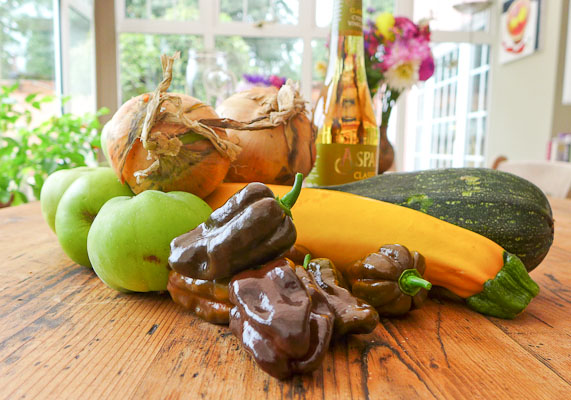
The following recipe makes a small batch of 4 jars. While it is very simple to make allow about 4 hours as the cooking time should be at least 3 hours. You can simply multiply up the ingredients to make more if required.
Chocolate Habanero Chutney Recipe Ingredients
- 6 x chocolate habanero chillies
- 500g marrow/courgette
- 250g of cooking apples
- 250g of onion
- 200g sultanas
- 100g of muscavado sugar
- 150g light brown caster sugar
- 350ml of cider vinegar
- 3 x large tomatoes
- 1 teaspoon of ginger powder
- 1 x teaspoon of white mustard seeds
- 1 x cinnamon stick
Spice Packet Ingredients
- 10 x black peppercorns
- 1 bay leaf
- 6 x cloves
- 1 x teaspoon of coriander seeds
Take a small square of muslin and place all of the above ingredients on top. Next draw the 4 corners together and tie firmly together with a piece of string. Added to the chutney this will allow the spices inside to gently infuse the mixture.
Making the Chutney…
Chop all of the ingredients into small pieces (1cm) and add everything to a large pan along with the spice packet and a splash of water. Slowly bring the mixture to the boil.
Once boiling, turn the heat down and cook on a low heat for 3-4 hours, stirring frequently to avoid it sticking to the bottom of the pan. You know when the chutney is ready when if you scrape a wooden spoon across the bottom of the pan the mixture takes 3-4 seconds to ooze back, re-covering the bottom of the pan.
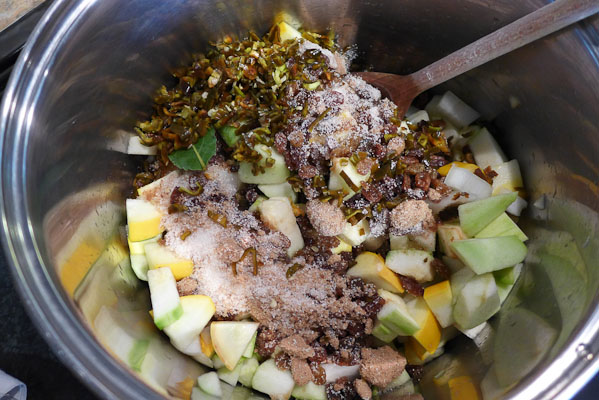
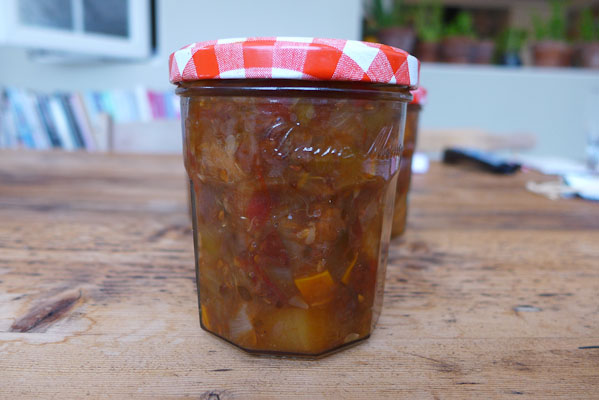
Remove from the heat and carefully pack into sterilised jars, packing it down to avoid any air bubbles. Cut a small circle of grease proof paper and place over the top before tightly sealing the jar.
Remember that all chutneys mellow slightly over time while the flavours improve. If it tastes way too hot when you jar it it should be perfect after a couple of months. Store in a cool dark place for at least 2 months before using. Stored well the chutney will last over 2 years. Once opened store in the fridge. It can be used in thousands of different waves but I think its perfect served with cheese and red wine.


